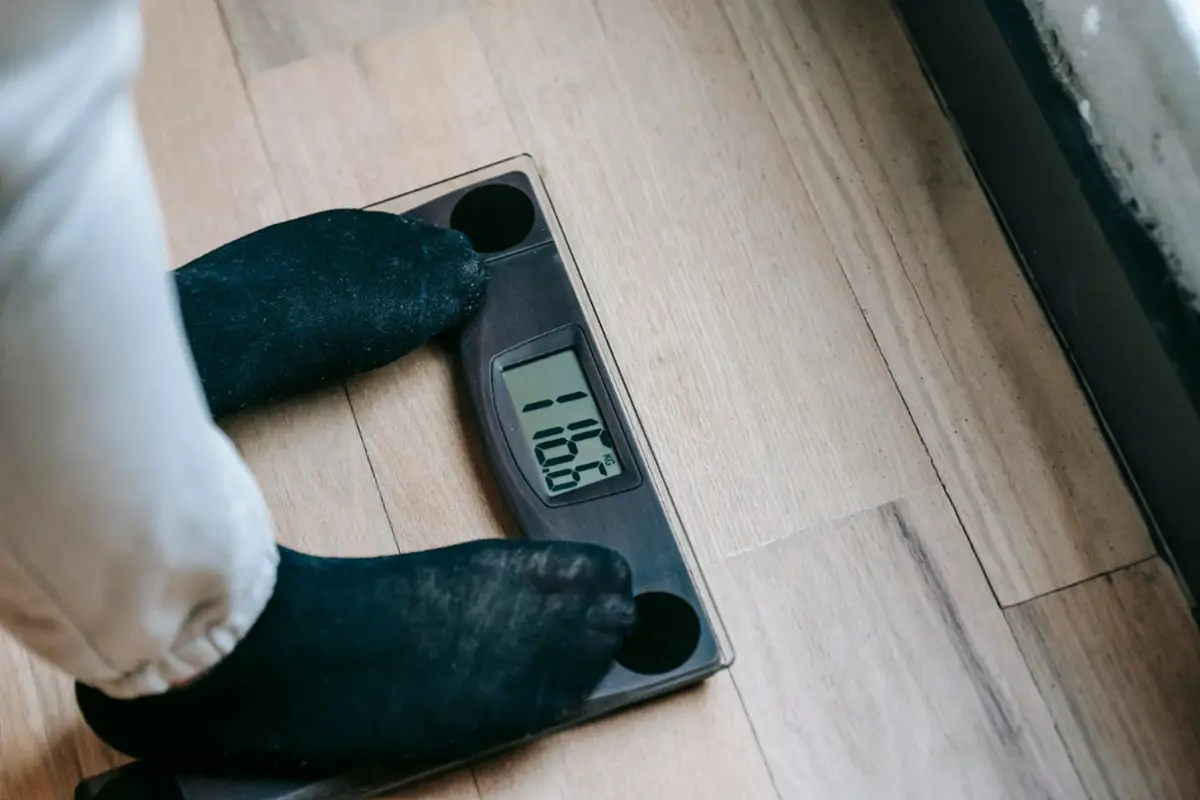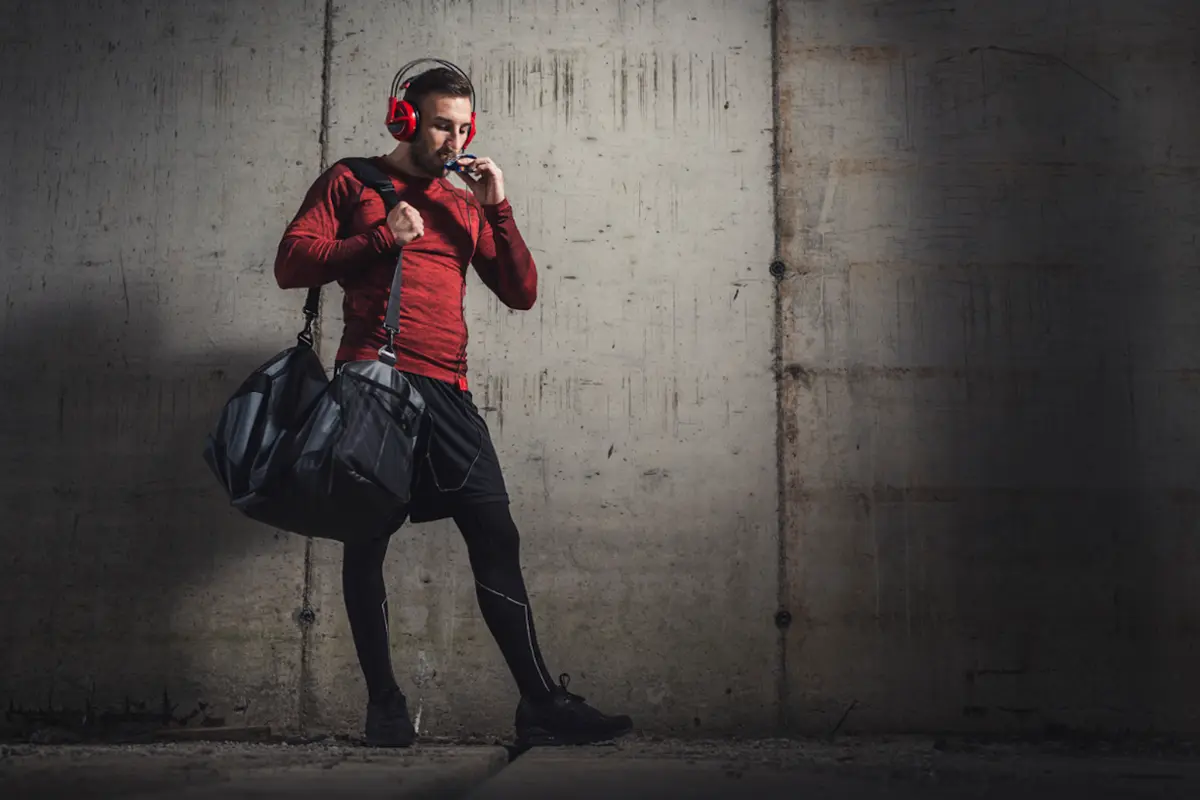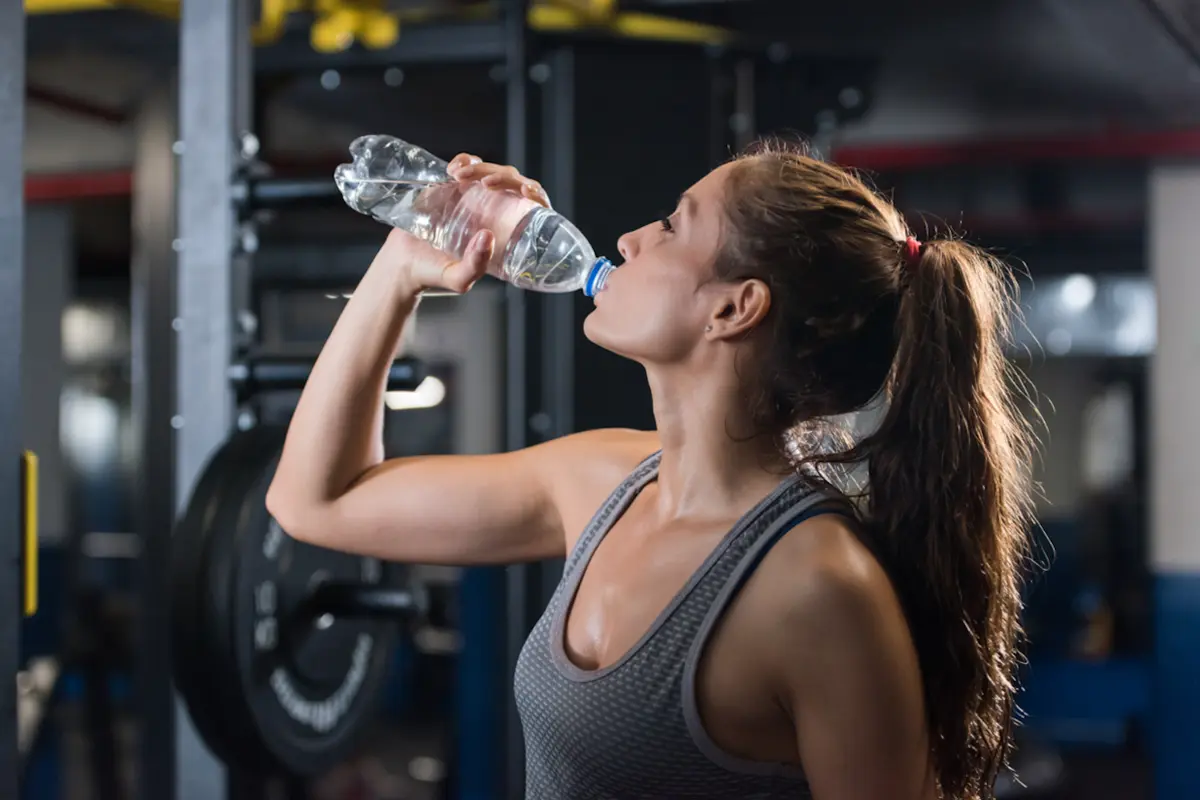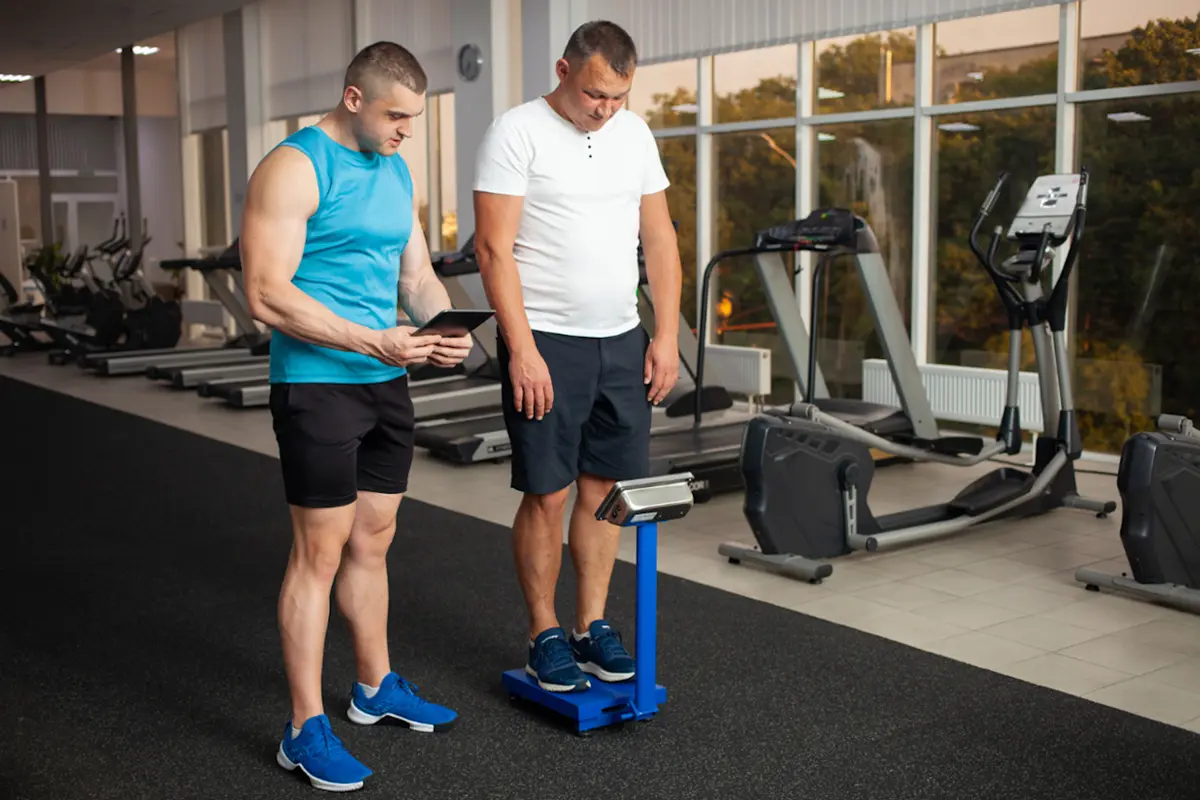Powerlifting Weight Class Management Tips

What's In This Article
- Key Highlights
- Introduction
- 1. Early Planning and Gradual Weight Loss
- 2. Nutrition Optimization
- 3. Powerlifting Hydration Strategies
- 4. Smart Use of Sodium in Managing Body Weight
- 5. Periodized Training
- 6. Rest and Recovery
- 7. Trial Runs and Professional Guidance
- Concluding Thoughts: Mastering Weight Management to Lose Weight and Lift Strong
- Frequently Asked Questions
- References
- Resources
Key Highlights
- Aim to lose no more than 0.5-1% of body weight per week for sustainable results.
- High protein intake is crucial for preserving muscle mass while cutting weight.
- Strategic water manipulation should only be done under professional guidance.
- Smart sodium management involves reducing intake before weigh-in and reintroducing it after.
- Training volume should decrease while maintaining intensity during the competition taper.
- Sleeping 7-9 hours is essential for recovery and weight management.
- Conducting trial runs helps refine weight management strategies before competition.
Introduction
Navigating powerlifting's demands goes beyond strength and dedication. It includes careful weight, food, and training management. Athletes who compete in a specific weight class aim to balance muscle, strength potential, and body weight for competitions.
This article shares key tips for powerlifters on strategic weight management before events. Tips range from planning and gradual weight loss to sodium use and staying hydrated. It covers tactics to boost performance while maintaining health.
The importance of structured training, rest, trial runs, and expert advice is highlighted for competitive powerlifters. These tips can enhance your preparation and strength for competitions, whether for a beginner going to their first meet or as a seasoned powerlifter.
1. Early Planning and Gradual Weight Loss
Initiating a weight management strategy well before the powerlifting meeting is crucial. This is especially true if it is your first competition. Eric Helms, a respected coach and researcher, discusses the importance of carefully planning weight cuts for powerlifting competitions. He advises that not all athletes should cut weight for meets and emphasizes the need for a well-structured fat-loss phase if necessary.
- Gradually decreasing bodyweight by 0.5-1% per week is key to maintaining muscle mass and energy levels essential for powerlifters.
- By adopting a steady approach to losing body fat, athletes reduce physiological stress compared to rapid weight loss methods. Quick cuts can lead to muscle loss, impacting performance on competition day (Jlid et al., 2013).
- A gradual fat loss strategy enables adjustments in the training program, ensuring the athlete can continue lifting heavy weights without compromising training intensity or risking injury due to fatigue.
- A powerlifting coach often emphasizes the importance of planning for powerlifting meets. This foresight involves preparing for the powerlifting event and strategically managing weight to align with the athlete's long-term health and performance goals.
- By losing weight gradually off-season, competitive lifters give themselves the best chance to adapt, adjust training loads, and ensure they're in peak condition to meet the federation's rules for their weight class.

2. Nutrition Optimization
Optimizing your diet is a cornerstone of effective weight management, especially when preparing for a powerlifting competition within a realistic timeline.
- A balanced, high-quality, protein-rich diet is essential for muscle maintenance and growth. Protein supports the repair and growth of muscle tissue damaged during intense training sessions and helps preserve as much muscle mass as possible while losing body fat (Pearson et al., 2022).
- Incorporating various protein sources, such as lean meats, dairy, and legumes, can provide a comprehensive profile of essential amino acids necessary for muscle recovery.
- Carbohydrates are crucial for fueling powerlifting sessions, serving as the primary energy source for high-intensity exercises like heavy squats and bench presses. Consuming enough carbs sustains energy levels during training, enabling maximum effort in each lift. Whole grains, fruits, and starchy vegetables release steady energy (Kanter, 2017).
- Fibrous vegetables enhance satiety and digestive health by adding volume to meals without excess calories. They keep you fuller for longer, aiding in weight loss efforts without deprivation. Vegetables such as broccoli, spinach, and kale are rich in fiber, vitamins, and minerals, promoting overall well-being..
- Adjusting caloric intake is crucial for body composition management. A slight deficit helps without compromising nutrition or performance. This balance supports weight loss while fueling strength training and recovery.
- Seek guidance from a powerlifting coach or sports nutritionist to tailor your diet effectively for healthy fat loss.
3. Powerlifting Hydration Strategies
Proper hydration is essential for health and performance in powerlifting.
- Water helps with many body functions, such as carrying nutrients and regulating temperature. Athletes training hard need to stay hydrated. As competition nears, watching fluid intake is crucial to be well-prepared.
- Before a powerlifting competition, some athletes may adjust their water intake to manage their bodyweight. This involves increasing water intake first, then reducing it before the weigh-in to shed water temporarily and compete in a different weight class without losing muscle mass.
- However, manipulating water intake should be cautiously approached, especially for a novice lifter. Incorrectly altering hydration levels can lead to dehydration, negatively impacting muscle strength, training intensity, relative performance, overall energy levels and cognitive functions (Leao et al., 2022).
- Getting help from a coach or a sports medicine pro for hydration advice is wise. They consider your needs, training, and body to adjust fluid intake properly for performance without harming health.
- Hydration means more than water; it's also about electrolytes like sodium and potassium. These are crucial for muscles and fluids. Eating foods rich in electrolytes or supplements can help balance them, especially during tough training or changing water intake.

4. Smart Use of Sodium in Managing Body Weight
Sodium is crucial for managing fluid balance. Athletes must balance sodium intake to perform well.
- Before weighing in, watch sodium intake to avoid water retention and hit your goal, whether staying in your current weight class or moving down.
- Reduce salty foods, but don't eliminate sodium entirely since it's necessary for muscles and nerves (Veniamakis et al., 2022).
- Avoid excess salt, mainly from processed foods high in sodium. Ingesting these before weigh in could push you into a heavier weight class.
- After the weigh-in, reintroduce sodium wisely for quick rehydration and muscle function. Balancing electrolytes is key for efficient muscle performance during lifts like squats and bench presses.
- Reintroduce sodium gradually with easily digestible foods or drinks to maintain electrolyte balance without discomfort. Choose options like soups, electrolyte drinks, or lightly salted snacks to enhance hydration without overwhelming the body.
5. Periodized Training
Periodized training strategically organizes phases to help powerlifters peak in strength for competition.
- Adjusting volume and intensity close to the meet is essential for recovery and maintaining peak strength. Boris Sheiko, the renowned Russian powerlifting coach who took his team to numerous world championships, typically recommends a step model for tapering. In this approach, volume is dropped by a certain amount and maintained at that level until the competition.
- Tapering is a key component of this periodization strategy. It involves a deliberate reduction in training volume—meaning fewer sets and reps—while keeping the intensity of the lifts high.
- By using lower volume while maintaining high intensity, athletes continue to engage the muscle groups and neural pathways essential for executing heavy lifts, such as the squat, bench press, and deadlift, without overtaxing the body.
- Reducing training volume helps the body recover and adapt, decreasing fatigue from heavy workouts. Athletes become fully ready and perform at their best after tapering. Think of it as sharpening a blade; tapering fine-tunes an athlete's strength for competitions.
- Tapering needs an understanding of one's body and training response. It usually starts a week or two before the competition, based on training history, recovery ability, and workout intensity.
- Maintaining good form in each lift during this time is crucial to solidify the technique without affecting the tapering process.
- A powerlifting coach is essential for designing and adjusting a periodized training program. They assess intensity, volume reduction, and maintain focus and confidence leading up to the competition. The coach's expertise tailors the tapering process to meet individual needs, ensuring peak performance when it counts.

6. Rest and Recovery
Adequate rest and recovery are crucial for powerlifters.
- It helps muscles repair, gain strength, and manage bodyweight effectively. Getting enough sleep and having rest days in training are key strategies for competition prep.
- Sleep is vital for muscle recovery and growth. The body repairs muscles and regains energy during sleep. This is especially important for athletes with intense training routines. Sleeping 7-9 hours can boost recovery, performance, and metabolic health (Dattilo et al., 2020).
- Rest days give the body a break from heavy lifting stress. They let worked muscles recover and grow stronger. Light activities like walking or yoga on rest days promote circulation without straining the body.
- Rest and recovery also help manage stress levels. High stress can impact bodyweight indirectly by affecting appetite and fat distribution.
7. Trial Runs and Professional Guidance
Implementing trial runs of your strategy is crucial for powerlifters preparing for competitions.
- Athletes can test how their bodies react to diet, hydration, sodium changes, and training adjustments. Powerlifters can refine their approach by simulating competition conditions without compromising performance or health in the long run.
- Trial runs offer insights into training load, hydration and sodium levels, and diet effects. They showcase post-weigh-in recovery, rehydration strategies' effectiveness, and their impact on lifting strength. Cutting sodium significantly may lead to cramping, necessitating extended time for proper rehydration.
- Seek guidance from experts like a coach. They provide valuable knowledge and experience to improve preparation. A coach can create a balanced program for choosing your next weight class and peak performance (Weldon et al., 2021).
- Nutritionists can adjust diets for body composition and performance support.
Concluding Thoughts: Mastering Weight Management to Lose Weight and Lift Strong
In powerlifting, managing weight and strength requires planning, discipline, and execution. Losing weight for competition involves setting clear goals for nutrition, hydration, sodium, and tailored training. Rest and recovery are vital for body repair.
Seeking guidance is crucial to fine-tuning approaches. Understanding your body and respecting its needs is key. Embrace these principles to excel in powerlifting competitions with effective strategies.
A final thought comes from Sebastian Oreb, known as the Australian Strength Coach, who focuses on strength gains rather than weight management. He believes in a balanced approach to programming that prioritizes technique and performance improvement. Oreb's philosophy suggests that weight management may be secondary to overall strength development, especially for beginners.
Frequently Asked Questions
How soon before a competition should I start cutting?
Start at least 8-12 weeks out to allow for gradual loss of 0.5-1% body weight per week.
Should I completely cut sodium before weigh-ins?
No, gradually reduce sodium intake, but don't eliminate it, as it's essential for muscle function and proper hydration.
Can I train at maximum intensity while cutting weight?
Yes, but reduce training volume (sets/reps) while maintaining intensity (heavy lifting) to preserve strength.
What should I eat after weigh-ins?
Focus on easily digestible carbs, moderate protein, and electrolyte-rich foods to rehydrate and restore energy without stomach discomfort.
How do I know if I'm cutting weight too quickly?
Watch for signs like significant strength loss, extreme fatigue, poor recovery, and difficulty maintaining training intensity - these indicate too aggressive a cut.
References
- Dáttilo, M., Antunes, H. K. M., Galbes, N. M. N., Mônico-Neto, M., Souza, H. D. S., Quaresma, M. V. L. D. S., Lee, K. S., Ugrinowitsch, C., Tufik, S., & de Mello, M. T. (2020). Effects of sleep deprivation on acute skeletal muscle recovery after exercise. Medicine & Science in Sports & Exercise, 52(2), 507-514.
- Jlid, M. C., Maffulli, N., Elloumi, M., Moalla, W., & Paillard, T. (2013). Rapid weight loss alters muscular performance and perceived exertion as well as postural control in elite wrestlers. The Journal of Sports Medicine and Physical Fitness, 53(6), 620-627.
- Kanter, M. (2017). High-quality carbohydrates and physical performance: Expert panel report. Nutrition Today, 53(1), 35-39.
- Leão, C., González-Fernández, F. T., Ceylan, H. I., Clemente, F. M., Nobari, H., Camões, M., & Carral, J. M. C. (2022). Dehydration, wellness, and training demands of professional soccer players during preseason. BioMed Research International.
- Pearson, A. G., Hind, K., & Macnaughton, L. S. (2022). The impact of dietary protein supplementation on recovery from resistance exercise-induced muscle damage: A systematic review with meta-analysis. European Journal of Clinical Nutrition, 77(8), 767-783.
- Veniamakis, E., Kaplanis, G., Voulgaris, P., & Nikolaidis, P. T. (2022). Effects of sodium intake on health and performance in endurance and ultra-endurance sports. International Journal of Environmental Research and Public Health, 19(6), 3651.
- Weldon, A., Duncan, M. J., Turner, A., Lockie, R. G., & Loturco, I. (2021). Practices of strength and conditioning coaches in professional sports: A systematic review. Biology of Sport, 39(3), 715-726.
Resources
- "Which Weight Class Is Best For You?" by Stronger by Science
- "How to Choose the Ideal Powerlifting Weight Class: A Comprehensive Guide" by Sisyphus Strength
- "Making Weight" section in the Training Resources page by World Powerlifting Congress SA